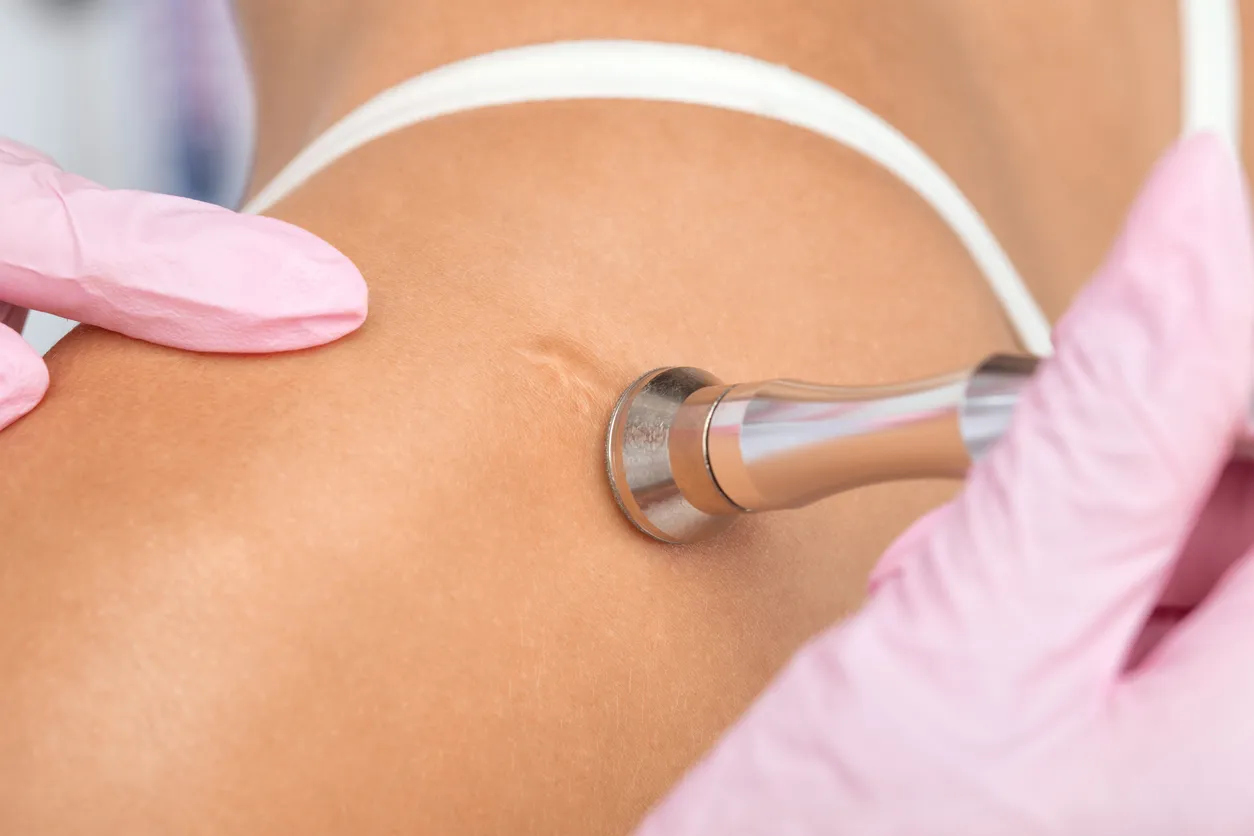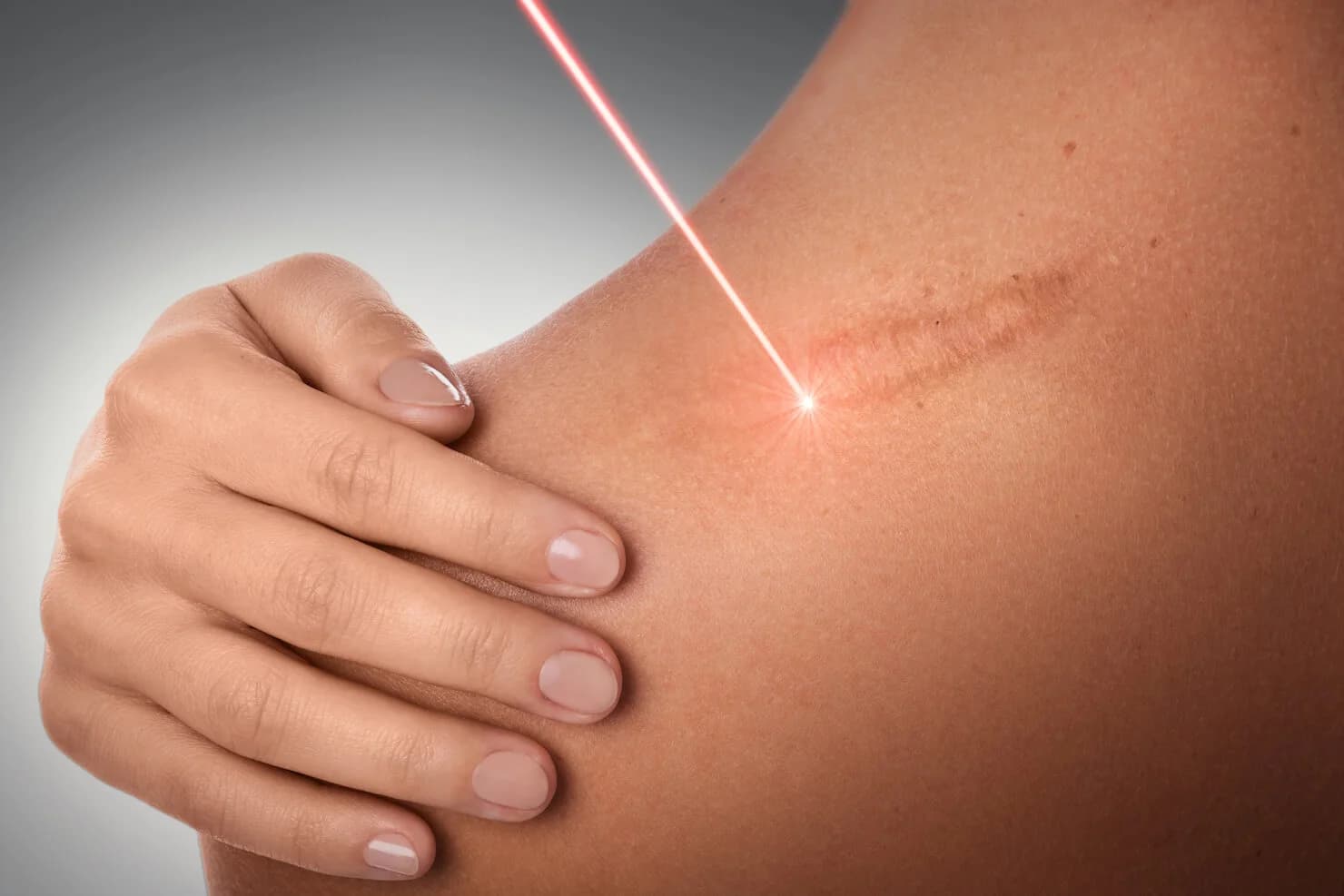You may have scars as a result of accidents, surgical procedures, or certain health conditions. A dermatologist can use a laser to reduce your scar’s appearance and minimize pain and itching. Although laser treatment cannot completely remove scars, it can make them less noticeable.
What Causes Scars?
Your scars may be the result of an injury or trauma to the skin. The more severe the injury, the bigger and deeper the scars it leaves. As your body aims to repair the damage as quickly as possible, it leaves uneven skin. Your body creates collagen (a type of protein) to fix the damage. Scars can have side effects that impact your life, including:
Problems with movement, especially if the scar is over a joint or particularly tight
Pain, even long after the wound has closed
Itchiness
An appearance you don't like or are self-conscious about

What Is Laser Scar Treatment?
During a laser scar treatment, beams of light are used to either remove scar tissue or poke holes in it. Both methods stimulate the production of collagen and allow your body to create new, smoother skin. After the treatment, your scar should appear lighter and less noticeable. Although laser treatment doesn’t remove scars completely, it helps your body to replace one scar with something less noticeable.
How Does Laser Scar Removal Work?
The 2 types of laser scar removal treatments include CO2 laser therapy and fractional laser therapy.
CO2 laser therapy
Using short pulses of light or continuous light beams, this type of therapy aims to remove thin layers of skin with minimal damage to the surrounding skin. During each treatment, a small amount of scar tissue is targeted, which means you might need multiple visits for larger scars. CO2 laser therapy may need up to 2 weeks of recovery.
Fractional laser therapy
During Fractional laser therapy, many narrow columns of light are used, which causes the collagen in the scar to tighten. The typical recovery time for this type of treatment is one week.

What kinds of scars can be treated with laser scar treatment?
- Acne scars
- Burn scars
- Injury scars
- Surgical scars
- Infection scars
Are there any risks or side effects?
Since a laser scar removal procedure uses light and heat to treat damaged skin cells, you may experience side effects such as:
Scarring
Swelling
Itching
Redness
Bleeding
Pain
What to Expect After Laser Scar Removal?
Following laser treatment, a bandage will be applied and should be left on for 24 hours. You will be instructed to clean the area between 2-5 times per day following the procedure with a saline solution or a diluted vinegar solution. Depending on your type of treatment, healing may take between 5-21 days. Once the area has healed, there may be some redness for as long as a few months.

Laser Scar Removal side effects
Aggravating cold sores
If you have a history of cold sores, undergoing a laser treatment may aggravate it. If you are having treatment around your mouth, let your doctor know, so they can give you an antiviral medication before the treatment.
Milia
Milia are small, white bumps, similar to tiny whiteheads. Gentle exfoliation with a warm cloth should be removed. If this doesn't help, your dermatologist can also remove them.
Hyperpigmentation
There may be a darkening effect on your skin after laser treatment. You can use a skin-lightening cream if you're concerned about it. You should also use sunscreen if you're spending time out in the sun after treatment.
Conclusion
In conclusion, laser scar removal is a modern, non-invasive procedure that has revolutionized the field of dermatology. It offers a promising solution to those seeking to minimize the appearance of scars. The procedure uses focused light therapy to either remove the outer layer of the skin’s surface or stimulate the production of new skin cells to cover damaged skin cells. It’s important to note that while laser scar removal can significantly reduce the visibility of scars, it may not completely erase them. The effectiveness of the treatment varies depending on the type, age, and location of the scar, as well as the individual’s skin type.